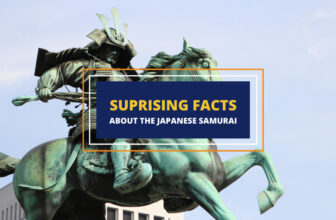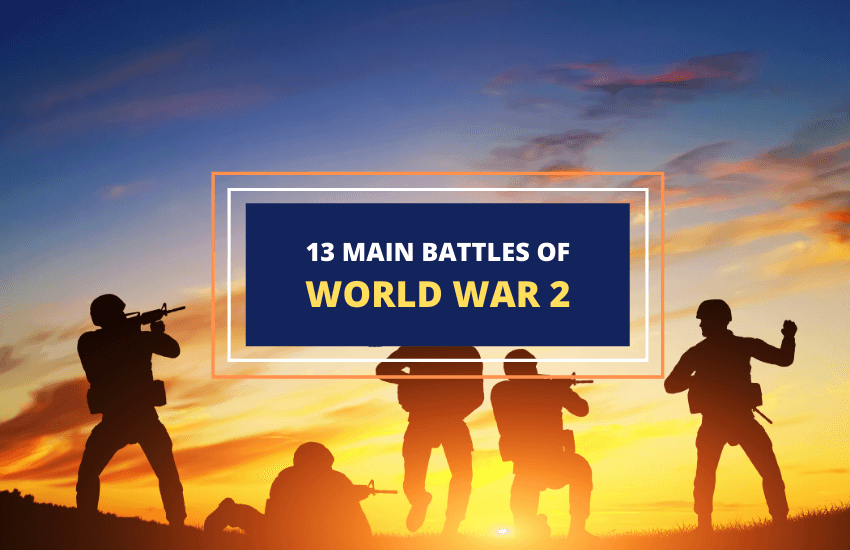
Table of Contents
After the Great War, European countries were looking forward to a long period of peace. France and Britain did not want to engage in combat against other territorial states, and this non-confrontational attitude allowed Germany to slowly annex their neighboring countries, starting with Austria, followed by Czechoslovakia, Lithuania, and Danzig. But when they invaded Poland, the world’s powers had no choice but to intervene. What followed was the biggest, most violent conflict known to mankind, aptly named World War 2.
Here are thirteen of the most important battles carried out in the air, land, and sea, and in every continent in the world. They are in chronological order and were selected based on their importance to the outcome of the war.
Battle of the Atlantic (September 1939 – May 1943)
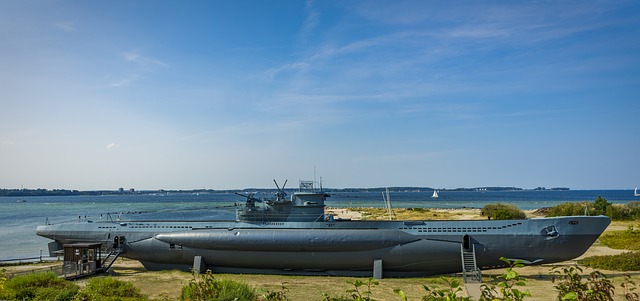
The Battle of the Atlantic is called the longest continuous military campaign that ran from the start of the war to the end (1939 to 1945). Over 73,000 men lost their lives in the Atlantic Ocean during this period.
When the war was declared, the Allied naval forces were deployed to ensure that the blockade of Germany was carried out, restricting the flow of supplies to Germany. Naval battles were not just fought on the surface, as submarines played an immense role in the development of the war. Sir Winston Churchill himself claimed, “The only thing that really frightened me during the war was the U-Boat peril”.
In the end, the Allied forces managed to overturn Germany’s naval superiority, and almost 800 German submarines were sent to the bottom of the Atlantic.
Battle of Sedan (May 1940)
As part of Germany’s offensive through the Ardennes, a hilly and wooded area in the North of France and Belgium, the village of Sedan was captured on 12 May, 1940. The French defenders had been waiting to destroy the bridgeheads, had the Germans come close, but they failed to do so due to heavy bombing by the Luftwaffe (the German air force) and the rapid advance of land troops.
In time, Allied reinforcements came in the shape of British and French air force planes but sustained heavy losses in the process. Germany proved their superiority both in the sky and in the land. After Sedan, the Germans had little resistance on their way towards Paris, which they finally captured on June 14.
Battle of Britain (July – October 1940)
Speaking of aircraft superiority, Britons were absolutely terrified during four months in 1940, when the Luftwaffe carried out what they called Blitzkrieg: large-scale, quick air attacks on British soil during nighttime, in which they aimed to destroy airfields, radars, and British cities. Hitler claimed that this was done in revenge, after over 80 RAF bombers dropped their bombs over commercial and industrial districts of Berlin. So they dispatched over 400 bombers, and more than 600 fighters to attack London on 7 September. Some 43,000 civilians were killed in this fashion. 15 September, 1940, is known as the ‘Battle of Britain Day’, as in that date a large-scale aerial battle was fought over London and the English Channel. Around 1,500 aircraft participated in this battle.
Attack on Pearl Harbor (7 December 1941)
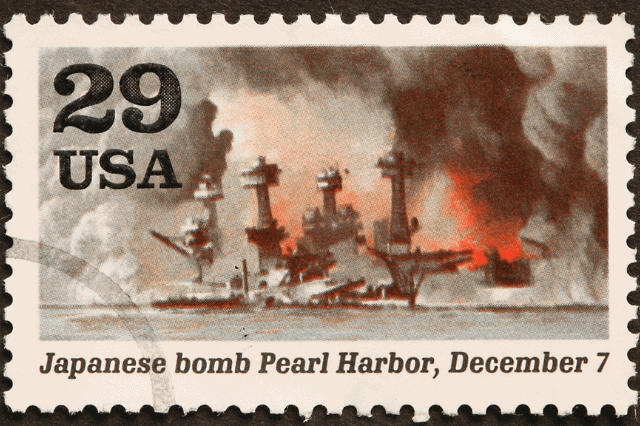
This surprise attack on American positions in the Pacific Ocean is widely regarded as the event that defined the United States’ involvement in World War 2. On 7th December 1941, at 7:48 a.m., over 350 Japanese aircraft launched from six different aircraft carriers and attacked an American base in the island of Honolulu, Hawaii. Four US battleships were sunk, and US troops stationed there suffered 68 casualties.
The Japanese had expected to conquer all American and European positions in the Pacific in a short period of time, and they began with Pearl Harbor. Although the attack was scheduled to start an hour after a formal war declaration was issued, Japan failed to notify the United States of the end of peace negotiations.
President Roosevelt wasted no time and declared war on Japan the following day. On 11 December, both Italy and Germany declared war on the US. The attack on Pearl Harbor was later declared a war crime, as it was carried out without warning and without a previous declaration of war.
Battle of the Coral Sea (May 1942)
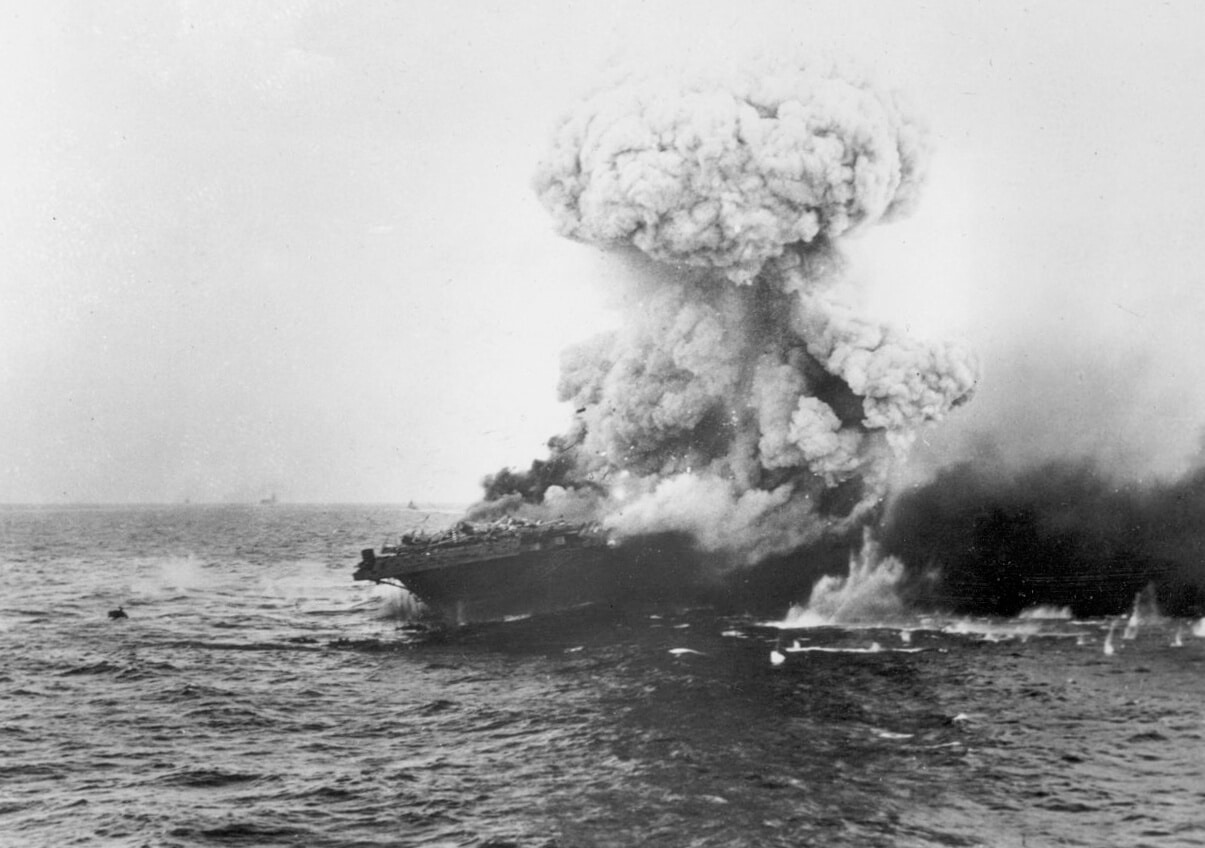
American retaliation was fast and aggressive. The first major naval battle between the Imperial Japanese Navy and the US Navy, with the help of Australian troops, took place between 4th to 8the of May 1942.
The importance of this battle stems from two factors. First, it was first battle in history in which aircraft carriers fought each other. Second, because it signaled the beginning of the end of the Japanese intervention in World War 2.
After the battle of the Coral Sea, the Allies discovered that Japanese positions in the South Pacific were vulnerable, and so they devised the Guadalcanal Campaign to weaken their defenses there. This campaign, along with the New Guinea Campaign that had begun in January 1942 and continued until the end of the war, were instrumental in forcing the Japanese to surrender.
Battle of Midway (1942)
Midway Atoll is an extremely small and isolated insular area in the middle of the Pacific Ocean. It is, also, the location at which Japanese forces suffered their most catastrophic defeat at the hands of the US Navy.
Admiral Yamamoto had expected to lure the American fleet, including four aircraft carriers, into a carefully prepared trap. But what he did not know was that American codebreakers had intercepted and decoded many Japanese messages, and they already knew the exact positions of most Japanese ships.
The counter-ambush planned by the US Navy was a success, and three Japanese aircraft carriers were sunk. Close to 250 Japanese aircraft were lost too, and the course of the war was changed in favor of the Allies.
The Battles of El Alamein (July 1942 and October – November 1942)
Several important battles of World War 2 were fought in Northern Africa, not with aircraft and ships, but with tanks and land troops. After conquering Libya, Axis forces under the leadership of Field Marshal Erwin Rommel planned to march into Egypt.
The problem was the Sahara Desert and the enormous expanses of sand dunes that separated Tripoli from Alexandria. As the Axis forces advanced, they met three main obstacles in El Alamein, some 66 miles from the most important cities and ports of Egypt – the British, the unforgiving conditions of the desert, and the lack of appropriate fuel supply for the tanks.
The first battle of El Alamein ended in a stalemate, with Rommel digging in to regroup into a defensive position after sustaining 10,000 casualties. The British lost 13,000 men. In October, combat resumed, coinciding with the Allied invasion of French North Africa, and this time under Lieutenant-General Bernard Montgomery. Montgomery pushed the Germans fiercely in El Alamein, forcing them to retreat to Tunisia. The battle was a huge victory for the Allies, as it signaled the beginning of the end of the Western Desert Campaign. It effectively ended the threat of the Axis powers taking over Egypt, the Middle Eastern and Persian oilfields, and the Suez Canal.
Battle of Stalingrad (August 1942 – February 1943)
In the Battle of Stalingrad, the Axis powers, comprising Germany and its Allies, fought the Soviet Union to capture Stalingrad, a strategically located city in Southern Russia (now known as Volgograd).
Stalingrad was an important industrial and transport hub, strategically positioned to give whoever controlled the city access to the Caucasus oil wells. It was only logical that the Axis aimed to gain control of the city early in their invasion of the Soviet Union. But the Soviets fought fiercely in the streets of Stalingrad, covered in rubble from heavy Luftwaffe bombings.
Although the German troops were not trained for close-quarter combat, nor for urban warfare, they made up for this in numbers, as there was a constant flow of reinforcements coming from the west.
The Soviet Red Army tried to trap the Germans in the city. In November, Stalin launched an operation that targeted the Romanian and Hungarian armies, protecting the flanks of the Germans attacking Stalingrad. This resulted in the German troops being isolated in Stalingrad, and finally defeated after five months, one week, and three days of combat.
Solomon Islands Campaign (June – November 1943)
During the first half of 1942, Japanese troops occupied Bougainville, in New Guinea, and the British Solomon Islands, in the South Pacific.
The Solomon Islands were an important communications and supply hub, so the Allies were not prepared to let them go without a fight. They proceeded to develop a counteroffensive in New Guinea, isolating a Japanese base at Rabaul (Papua, New Guinea), and landing in Guadalcanal and some other islands on 7 August 1942.
These landings initiated a series of brutal battles between the Allies and the Japanese Empire, both in Guadalcanal and in the central and northern Solomon Islands, on and around New Georgia Island, and Bougainville Island. Known to fight until the last man, the Japanese continued to hold on to some of the Solomon Islands until the end of the war.
Battle of Kursk (July – August 1943)
As exemplified by the Battle of Stalingrad, combat in the Eastern Front tended to be more vicious and relentless than elsewhere. The Germans launched an offensive campaign they called Operation Citadel, with the objective of taking the Kursk area through numerous simultaneous attacks.
Although the Germans had the upper hand, strategically speaking, they delayed the attack while they waited for weapons to be delivered from Berlin. This gave the Red Army time to build their defenses, which proved to be highly efficient in stopping the Germans in their tracks. Germany’s extensive losses of men (165,000) and tanks (250) ensured that the Red Army remained in advantage during the rest of the war.
The Battle of Kursk was the first time in the Second World War when a German strategic offensive was stopped before it could break through enemy defenses.
Battle of Anzio (January – June 1944)
The Allies entered fascist Italy in 1943, but encountered significant resistance. Unable to advance further, Major General John P. Lucas devised an amphibious landing near the towns of Anzio and Nettuno, which depended heavily on their ability to move swiftly and undetected.
However this was not the case as the beachheads were strongly defended by German and Italian forces. The Allies could not penetrate the town at first, but managed to finally break through only by the sheer number of reinforcements they summoned: more than 100,000 men were deployed to guarantee a victory at Anzio, which would in turn allow the Allies to move closer to Rome.
Operation Overlord (June – August 1944)
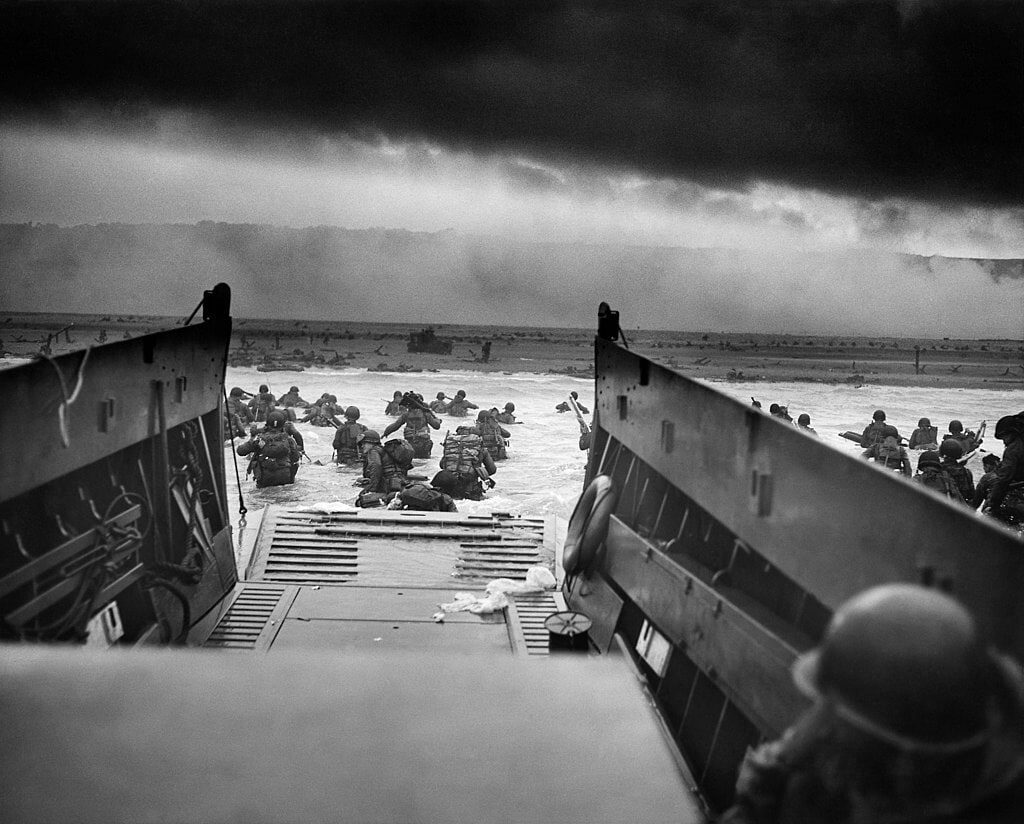
D-Day might be the most glorified historical war event in cinema and novels, and rightly so. The sheer size of the armies involved, the different countries, commanders, divisions, and companies that took part in the Normandy Landings, the difficult decisions to be made, and the complicated deceptions that were designed to mislead the Germans, make the invasion of France by the Allies a turning point in history.
Operation Overlord was chosen by Churchill to name this invasion, carefully planned and painstakingly executed. The deceptions worked, and the Germans were ill prepared to resist the landing of over two million Allied troops in Northern France. Casualties on both sides amounted to more than a quarter million each, and over 6,000 aircraft were shot down.
Most of these were shot down in the beaches, nicknamed Utah, Omaha, Gold, Sword, and Juno, but by the end of the first day (6 June) the Allies had gained a foothold in most of the important areas. Three weeks later, they would capture the port of Cherbourg, and on 21 July the Allies were in control of the city of Caen. Paris would fall on 25 August.
Battle of the Bulge (December 1944 – January 1945)
After the large-scale invasion of Normandy by British, Canadian, and American troops, Hitler prepared a counteroffensive that, he hoped, could stop the Allies from reaching Germany.
The Ardennes would be the chosen field, and on the morning of 16 December 1944, the German forces launched a surprise attack on the Allies that inflicted massive damage to their troops. But it was a desperate attack, as Germany’s reinforcements and armored vehicles were almost depleted by then.
Germany managed to delay the Allies’ advances into central Europe for five to six weeks, but it was not enough time to gather more resources and build more tanks. The Battle of the Bulge was the largest and bloodiest conflict fought by US troops in World War 2, with almost 100,000 casualties. In the end, it resulted in an Allied victory, and sealed the fate for the almost exhausted Axis powers.
In Brief
World War 2 was a defining point of time, a pivotal event that changed modern history. From the hundreds of battles fought, the above are some of the most significant and eventually helped in turning the tide in favor of an Allied victory.





